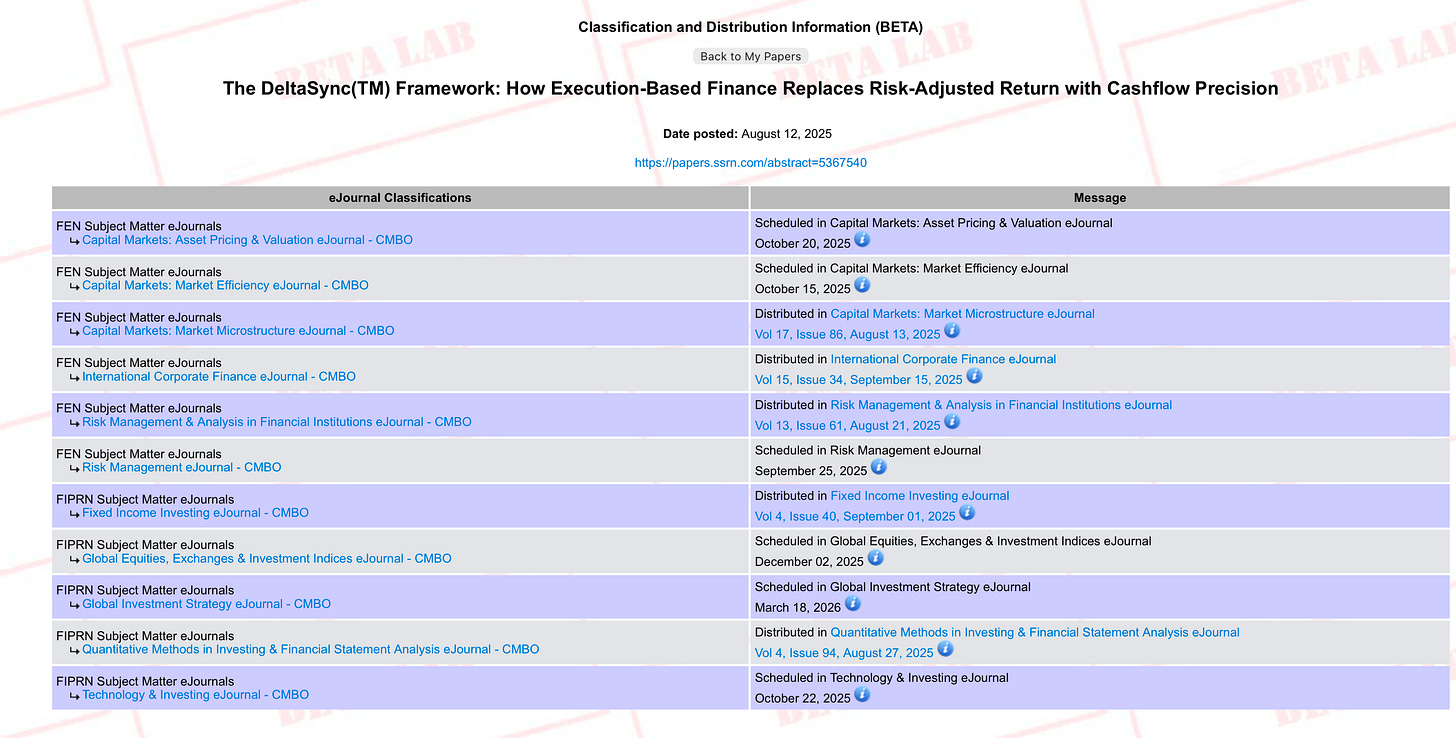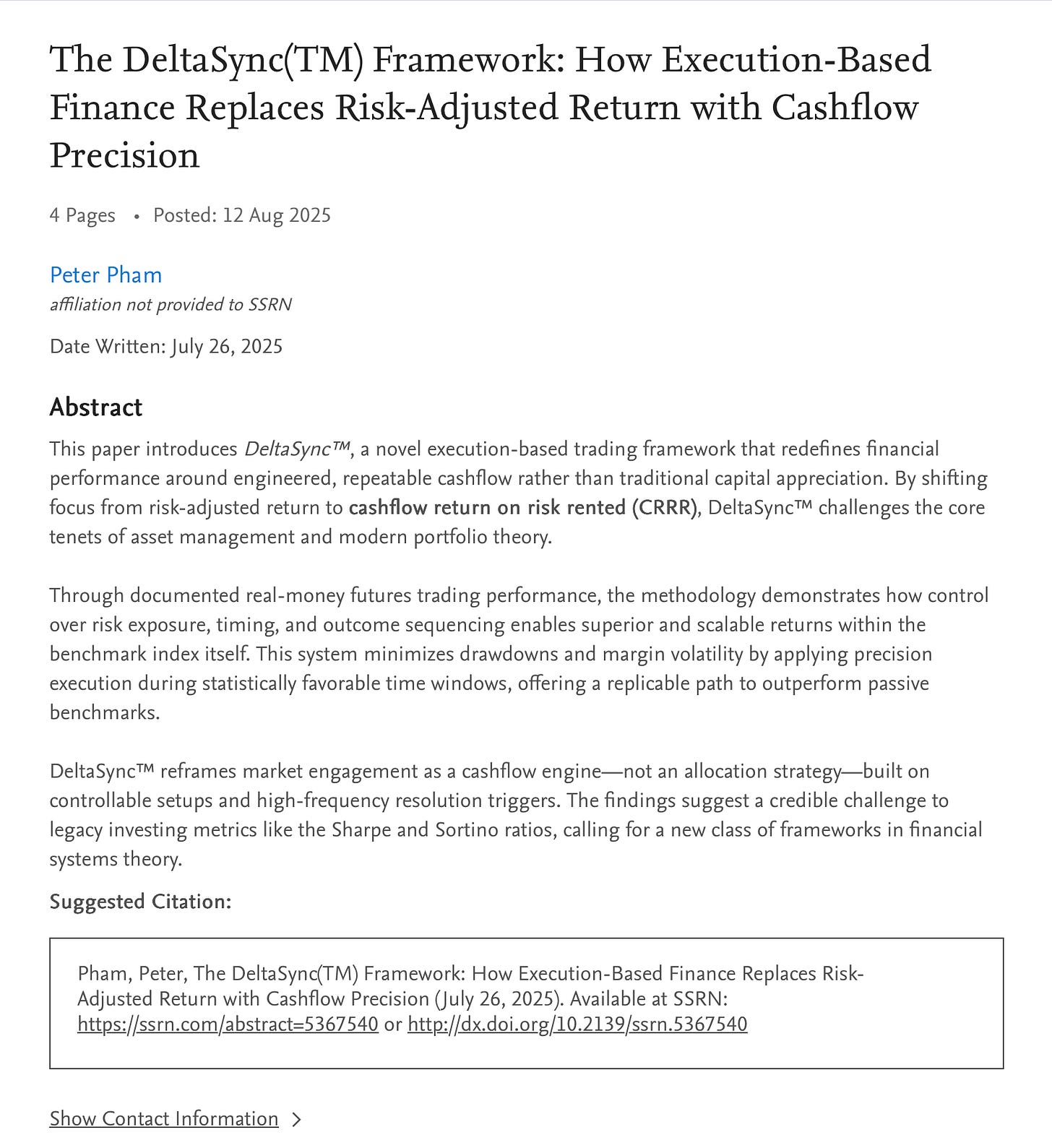Execution-Based Finance Breaks Into Academic Circulation
Most papers on SSRN come from professors, PhDs, or research desks. They carry the badges of NYU Stern, Stanford GSB, or BlackRock.
Mine didn’t.
No academic chair.
No institutional affiliation.
And yet —
My paper, The DeltaSync™ Framework: How Execution-Based Finance Replaces Risk-Adjusted Return with Cashflow Precision, has already:
Been classified into 10 different SSRN eJournals (from Market Microstructure to Technology & Investing).
Landed in Top Papers with just few downloads — enough to rank in a space where most papers never break 10.
Been scheduled for recurring distribution over the next 6+ months — SSRN itself will keep placing it into inboxes of professors, PhDs, institutional analysts, and policy researchers across finance.
Here’s the scale:
Over the course of these distributions, the paper is projected to reach 30,000–50,000 unique inboxes across finance and academia.
Not clicks. Not casual impressions. Actual SSRN subscribers — researchers, policy makers, institutional desks — receiving the framework directly in their email.
This is rare.
Realistically: probably <0.1% of unaffiliated papers break into this level.For an unaffiliated individual, it almost never happens.
But it makes sense.
Execution-Based Finance isn’t theory.
It’s presence.
It’s variance collapse in seconds, turned into a framework that academia can’t ignore.
In the market, I author the burst — the variance collapse that sets tempo.
On SSRN, that same collapse happened in downloads.
One paper bent the baseline.
The institutions need affiliations to be seen.
I only need receipts.




